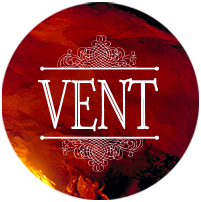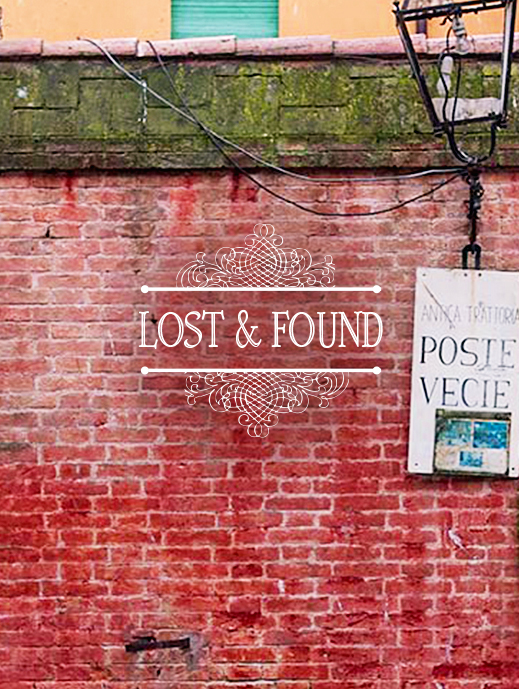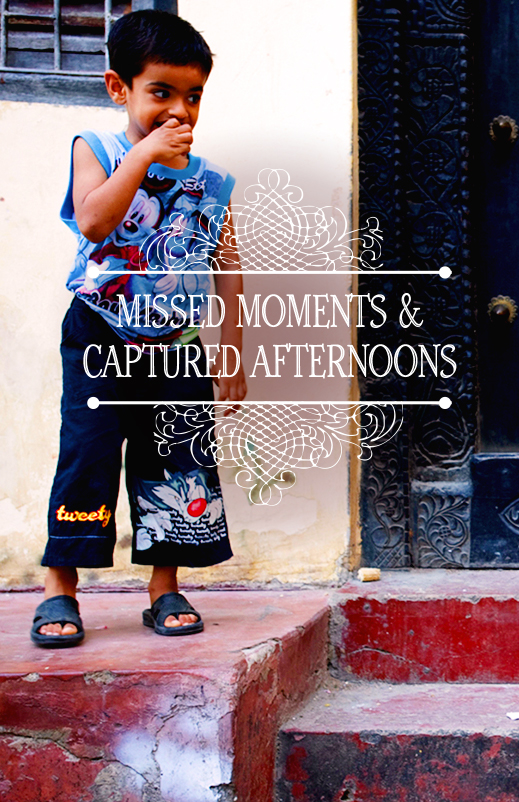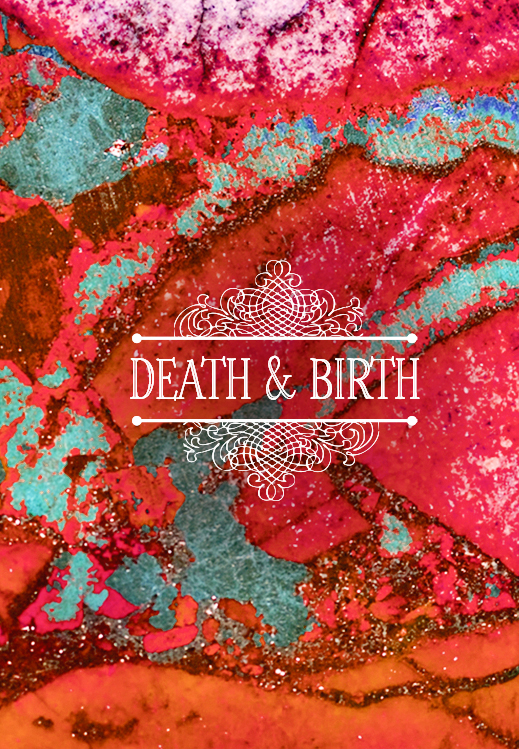The only way out is in. By going in we create a vent out of whatever difficult situation lies before us. In has the power to transform ugh into hmm and hmm into aha.

“In the disruption is the path out.”
Disruptions often occur when we think we know where we are, where we are going, what is best—when in reality we are terribly lost and going farther astray. Or they happen when we have frozen ourselves in time, become stagnant in our personal growth. There are as many reasons why they happen, as there are people and disruptions. But if we don’t go in, we can never know.
Disruptions come camouflaged in all kinds of disguises. Failed dreams, lost keys, stubbed toes, car accidents—even something as seemingly life-stopping as death can all be opportunity masquerading as misfortune.
Paths are much the same. Some are short and makeshift—necessary only for a moment in time. Others are more like thoroughfares you’ll be on and off of the rest of your life.
Below are personal examples of three disruptions and how they opened into unexpectedly transformative paths. It’s best to give these important paths official names, the quirky personal equivalent to Hwy. 66.

The Disruption:
Picture this. After a five-hour car trip and two-hour ferry ride with two dogs and two boys under five, we go down the same street for the sixth time. From the back seat there are pleas of “wheeeeen are we going to get there?” From the driver’s seat, tension and frustration radiates from my husband. I suggest we pull over and ask.
The Path:
We do. A nice young man with his girlfriend walks over to my passenger window. “We are trying to find Weweeder Street so we can get to Plum…” He smiles and says, “Oh, Weweeder is a paper road. You have to take Nonantum to get to Plum.”
Every ounce of stress disappears. NOT because there is the hope we may finally arrive at our long-awaited destination but because I can tell before I even ask that the definition of paper road is going to be important. I ask. He says matter-of-factly, “Oh, it’s a road that gets mapped out on paper but never gets built. So you can never get where you need to go on one.” I thank him.
THIS will be with me forever. I would agree to be lost for another eight hours to learn this. For me, it is a revelation. Of course that’s why I feel lost most of the time. I am trying to follow other peoples’ maps. We are all off grid under the mistaken illusion we are not.
Every ounce of stress disappears. NOT because there is the hope we may finally arrive at our long-awaited destination but because I can tell before I even ask that the definition of paper road is going to be important. I ask. He says matter-of-factly, “Oh, it’s a road that gets mapped out on paper but never gets built. So you can never get where you need to go on one.” I thank him.
THIS will be with me forever. I would agree to be lost for another eight hours to learn this. For me, it is a revelation. Of course that’s why I feel lost most of the time. I am trying to follow other peoples’ maps. We are all off grid under the mistaken illusion we are not.
If not for getting lost, we have no Paper Roads.
The Disruption:
We are stuck in nightmare traffic on our way back from our underwhelming trip to the New Jersey Museum of Science. Not one of my better educational ideas. After quite a bit of silence and sighing, my son Leo says, “I wish I had Kapoof power!”
“What is THAT?” I ask excited. This same sense of impending insight comes over me. I knew it was going to be a piece of forever-family genius being offered up from the back seat. “It’s the power to transport yourself to wherever you want to be,” he said.
“What is THAT?” I ask excited. This same sense of impending insight comes over me. I knew it was going to be a piece of forever-family genius being offered up from the back seat. “It’s the power to transport yourself to wherever you want to be,” he said.
The Path:
We use it now as a joke in stressful situations. We use it to describe our deepest desire to visit people we love who have passed away. We use it out of the blue to create imaginary realities that jet us out of our kitchen counter homework setting. It has a magical freedom and declarative power that the whinier “wish we could just be…” does not. We use it as a meditative way to transport ourselves from upsetting places (emotional, mental or physical) to a place of peace.
If not for terrible traffic, we have no Kapoof Power.


The Disruption:
We are going to be late for school. Breakfast has been going on for over forty minutes. My son Finn, for the third time, says, “Hey mom look what I made?” Without turning around from their lunches I beg him to, “Please, just eat your breakfast.” I feel an immediate hot wave of guilt. I do not want to be that mom.
I turn around. His face is dejected. He had built an “I love you” sign out of blueberries. In tears, I apologize. I promise him we are going to use the rest of the blueberries after school to write messages to each other.
It is impossibly difficult to navigate a rich inner life with the pressing schedule of reality, to protect them from the unquantifiable damage of a rushed life and still teach them the importance of being on time, to attend to the things we must do and allow enough time to simply be.
I turn around. His face is dejected. He had built an “I love you” sign out of blueberries. In tears, I apologize. I promise him we are going to use the rest of the blueberries after school to write messages to each other.
It is impossibly difficult to navigate a rich inner life with the pressing schedule of reality, to protect them from the unquantifiable damage of a rushed life and still teach them the importance of being on time, to attend to the things we must do and allow enough time to simply be.
The Path:
That afternoon I proposed a new idea. What if there was a kind of time not measured in time—a kind of “new” time that revolved around the organic beginning and end of experiences instead of around the face of a clock…A kind of “flow” time in which breakfast could exist as an unscheduled unfolding of individually chosen episodes rather than a measured amount of minutes?
We’d call it Pod Time. And it could stretch like warm taffy or be cut like a stray thread. There would be no designated “right” amount of time to make food art or collect acorns or take a bath. It would be about what’s right for you. It couldn’t happen all the time. But we could schedule a day of it. And begin balancing out outer reality and inner reality.
We’d call it Pod Time. And it could stretch like warm taffy or be cut like a stray thread. There would be no designated “right” amount of time to make food art or collect acorns or take a bath. It would be about what’s right for you. It couldn’t happen all the time. But we could schedule a day of it. And begin balancing out outer reality and inner reality.
If not for my exasperated comment, we have no Pod Time.
The Disruption:
The Easter after my husband’s grandmother died, which was two Easters after my mother died, I realized the thing I missed most about holiday family gatherings was the ability to go sit next to either one of them and feel safe, safe to be quiet, to be tired, to be myself—whatever that looked like at that moment.
To sit right by their side was like being on a beautiful island where you could observe the mainlanders but not be carried away by any of their stress or expectations—where you could rest in the peace of not doing more.
To sit right by their side was like being on a beautiful island where you could observe the mainlanders but not be carried away by any of their stress or expectations—where you could rest in the peace of not doing more.
The Path:
After that Easter was over and the dishes were done, I lay stretched out on our couch and thought OUR children must have this Safe Island. They must have a warm presence where they can go to feel safe.
I must be able to make an island away for them, even if it is an island away from me. They need to know I can abandon any big important point I am trying to make if they are feeling too overwhelmed and need the pure safety of loving acceptance.
If they ask, we can leave whatever is going on, walk to a nearby chair or couch and together we can becomes an island, where they can be whoever they are right then, feel however they are feeling and know it is okay. They get to call for this even if I am in the middle of being mad at them. Grandmothers and mothers of grown children do this best I think. But these women are gone now, so it is up to me.
If they ask, we can leave whatever is going on, walk to a nearby chair or couch and together we can becomes an island, where they can be whoever they are right then, feel however they are feeling and know it is okay. They get to call for this even if I am in the middle of being mad at them. Grandmothers and mothers of grown children do this best I think. But these women are gone now, so it is up to me.
If not for the loss of my islands, I am not creating their Safe Island.




